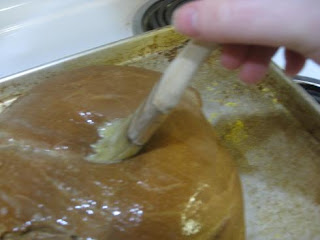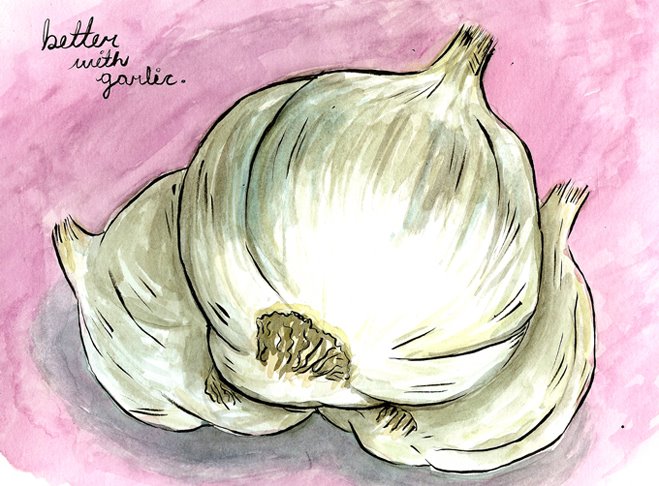Dark Pumpernickel Bread from The Fiddlehead Cookbook:
Makes 1 free form loaf/regular loaf or two cocktail loaves
1½ c. warm water
6 Tb. molasses
1½ Tb. dry yeast (1½ packages)
3 Tb. unsweetened cocoa
1¾ c. rye flour
1 c. unbleached white flour
¾ c. whole wheat flour
1½ Tb. oil
1½ Tb. caraway seeds (I did not use these)
¾ Tb. salt (I used kosher)
2 Tb. finely chopped onions (optional. I also did not use these)
1/3 to ½ c. unbleached white flour as needed
Cornmeal
1 egg
1 Tb. water
Place water in a large mixing bowl or the bowl of an electric mixer fitted with a dough hook and dissolve molasses in it. Add dry yeast and allow to set, or “bloom”, for 3 to 5 minutes, until it is bubbling and active.

Stir in cocoa, then add rye flour and 1 cup white flour. Beat until smooth and allow to rise for 30 minutes in a warm spot. Add whole wheat flour, oil, caraway seeds (if you’re using them), salt and optional onion. Knead for 10 minutes, until dough forms a smooth, spongy ball, slightly sticky to the tough. I didn’t need the full 10 minutes. It responded very quickly. Add additional white flour only as needed to bring dough together. Place in a large well-oiled bowl (clean out your mixer bowl and just use that), turning dough so that it become lightly oiled on all sides. Cover loosely and let sit in a warm spot until doubled in bulk and dough does not spring back when lightly touched. This should be about 1½ hours.
Punch down. If you have time, allow dough to rise until doubled again. (It will take half the time of the first rising).
Turn dough out onto a very lightly floured surface and knead into a smooth ball. Cover loosely and let rest for 5 minutes.
Lightly oil a large cookie sheet. Sprinkle with cornmeal. Preheat oven to 350 degrees.
I did not shape the dough with the following directions. Rather, I shaped it into a large ball and left it as a free form loaf. I have some issues with shaping anyway, but I do like the way free form loaves look. If you do decide to shape it, this it what they said: Roll or pat dough into a 12-by 8- by 1½-inch-thick rectangle. Beginning from the narrow end, roll up tightly, tuck in ends, pinch seams together, and roll lightly to even out the load.
Place loaf, seam down, on cookie sheet. Cover loosely and let rise in a warm spot until double in bulk (about ½ hour).


Beat egg with water and brush over loaf. Using a very sharp knife or kitchen shears, make 3 diagonal cuts in top of loaf. Bake for 35 to 40 minutes, until loaf is crusty and hollow sounding when tapped on bottom. Remove from oven and place on a rack to cool. Wrap lightly and store at room temperature or freeze to eat later.
As I did modify this, I do have a couple of things to add. If you do it with the onion and caraway seeds, it may be better to reduce the cocoa powder by half. Without the contrast, the cocoa takes on a nearly overwhelming flavor. It just goes to show that you can’t always win when you modify something before you try it. However, this bread did still turn out very well and I will have to try it the way it was meant to be made.
.jpg)




No comments:
Post a Comment